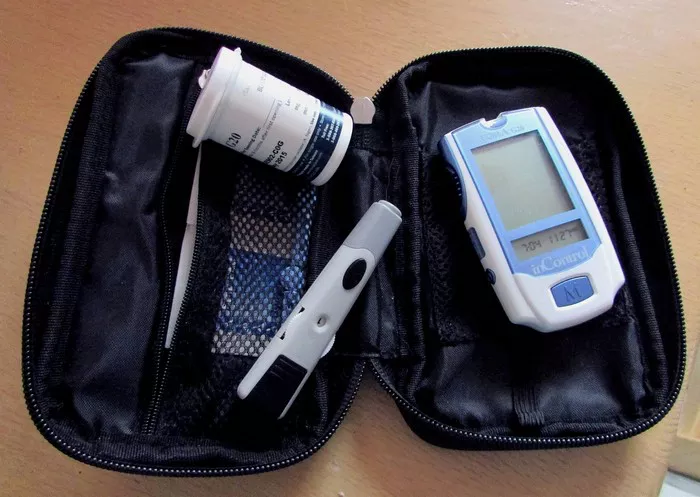Diabetes is a chronic condition characterized by high blood sugar levels that, if left unmanaged, can lead to a range of serious complications. While effective management of blood glucose levels can significantly reduce the risk of these complications, individuals with diabetes, particularly those with long-standing or poorly controlled diabetes, are at heightened risk for a number of health issues. Understanding the major complications associated with diabetes is crucial for both prevention and treatment. This article will explore the five major complications of diabetes, their impact on health, and strategies for managing or reducing their risk.
1. Cardiovascular Disease
One of the most serious complications of diabetes is cardiovascular disease (CVD), which includes heart disease, stroke, and peripheral artery disease. People with diabetes are at a significantly higher risk of developing cardiovascular conditions due to the impact of elevated blood sugar levels on the blood vessels and nerves that control the heart and blood flow.
How Diabetes Affects Cardiovascular Health
Chronic high blood sugar levels can damage blood vessels and the nerves that control the heart and blood vessels, leading to several cardiovascular problems:
Atherosclerosis: Diabetes accelerates the formation of plaque (a buildup of fat, cholesterol, and other substances) in the walls of blood vessels, which can restrict blood flow and increase the risk of heart attacks and strokes.
Hypertension (High Blood Pressure): Diabetes often coexists with high blood pressure, which further increases the risk of cardiovascular complications. High blood pressure puts additional strain on the heart and blood vessels, contributing to atherosclerosis and increasing the likelihood of heart disease and stroke.
Coronary Artery Disease (CAD): People with diabetes are more likely to develop CAD, which occurs when the arteries that supply blood to the heart become narrowed or blocked, leading to chest pain (angina), heart attacks, and other heart problems.
Signs and Symptoms of Cardiovascular Disease
- Chest pain or discomfort
- Shortness of breath
- Pain, numbness, or weakness in the arms or legs
- Irregular heartbeats
- Fatigue and dizziness
Prevention and Management
Blood glucose control: Keeping blood sugar levels within target ranges can help reduce the risk of developing cardiovascular complications.
Blood pressure management: Maintaining healthy blood pressure levels is crucial for preventing heart disease and stroke. This may involve lifestyle changes, such as reducing salt intake, losing weight, and exercising, as well as medication if necessary.
Cholesterol management: Managing cholesterol levels through diet, exercise, and, if needed, medication, can reduce the risk of atherosclerosis and related cardiovascular issues.
Healthy lifestyle: Regular physical activity, a heart-healthy diet, quitting smoking, and limiting alcohol intake can all contribute to better cardiovascular health.
2. Diabetic Neuropathy
Diabetic neuropathy is a type of nerve damage that can occur in individuals with diabetes, particularly those with long-standing or poorly controlled blood sugar levels. Neuropathy can affect various parts of the body, but it most commonly affects the nerves in the legs and feet.
How Diabetes Affects the Nervous System
High blood sugar levels can damage the small blood vessels that supply the nerves with oxygen and nutrients. Over time, this can lead to nerve damage, causing a range of symptoms depending on the type of neuropathy.
Types of Diabetic Neuropathy
Peripheral neuropathy: The most common type, peripheral neuropathy affects the nerves in the hands, feet, arms, and legs. Symptoms include numbness, tingling, burning, or pain, particularly in the feet and legs.
Autonomic neuropathy: This type of neuropathy affects the nerves that control involuntary functions such as heart rate, blood pressure, digestion, and bladder function. Symptoms can include changes in heart rate, blood pressure, digestive issues, and bladder or sexual dysfunction.
Proximal neuropathy: This rare type of neuropathy affects the nerves in the hips, thighs, or buttocks, causing pain and muscle weakness.
Focal neuropathy: Focal neuropathy involves sudden weakness or pain in one nerve or a group of nerves, often affecting the head, torso, or legs.
Signs and Symptoms of Diabetic Neuropathy
- Numbness or tingling in the hands or feet
- Burning, stabbing, or shooting pain
- Muscle weakness
- Loss of balance and coordination
- Digestive issues such as nausea, vomiting, constipation, or diarrhea
- Dizziness and fainting due to blood pressure changes
Prevention and Management
Blood glucose control: Keeping blood sugar levels within target ranges is essential for preventing or slowing the progression of neuropathy.
Foot care: Regular foot inspections, proper footwear, and early treatment of foot problems can help prevent complications such as infections and ulcers.
Pain management: Medications such as anticonvulsants, antidepressants, and pain relievers may be prescribed to manage neuropathy pain.
Physical therapy: Physical therapy can help improve muscle strength and coordination in individuals with neuropathy-related muscle weakness.
3. Diabetic Retinopathy
Diabetic retinopathy is a complication of diabetes that affects the eyes, specifically the retina, the light-sensitive tissue at the back of the eye. It is a leading cause of blindness in adults and is more common in individuals with long-standing diabetes or poorly controlled blood sugar levels.
How Diabetes Affects Vision
High blood sugar levels can damage the blood vessels in the retina, causing them to swell, leak, or become blocked. In some cases, abnormal blood vessels may grow on the surface of the retina, leading to vision problems and, in severe cases, blindness.
Stages of Diabetic Retinopathy
Non-proliferative diabetic retinopathy (NPDR): In the early stages of retinopathy, the blood vessels in the retina may weaken and leak fluid or blood, causing swelling in the retina. This can lead to blurred vision.
Proliferative diabetic retinopathy (PDR): In advanced stages, new, abnormal blood vessels may form on the surface of the retina. These blood vessels are fragile and prone to bleeding, which can cause scarring and detachment of the retina, potentially leading to blindness.
Signs and Symptoms of Diabetic Retinopathy
- Blurry vision
- Floaters (spots or dark strings that float in the vision)
- Dark or empty areas in the vision
- Vision loss
Prevention and Management
Blood glucose control: Keeping blood sugar levels within target ranges can help prevent or slow the progression of retinopathy.
Regular eye exams: People with diabetes should have regular dilated eye exams to detect retinopathy in its early stages. Early detection and treatment can prevent or reduce the risk of vision loss.
Laser treatment: In some cases, laser treatment can be used to stop or slow the progression of retinopathy by sealing leaking blood vessels or shrinking abnormal blood vessels.
Surgical options: In advanced cases, surgery may be required to remove scar tissue or repair a detached retina.
4. Diabetic Nephropathy
Diabetic nephropathy, also known as diabetic kidney disease, is a complication that affects the kidneys’ ability to filter waste and excess fluid from the blood. It is one of the leading causes of chronic kidney disease (CKD) and kidney failure in people with diabetes.
How Diabetes Affects the Kidneys
High blood sugar levels can damage the small blood vessels in the kidneys, impairing their ability to filter waste products effectively. Over time, this can lead to a decline in kidney function, eventually resulting in kidney failure if not properly managed.
Stages of Diabetic Nephropathy
Early stage: In the early stages of nephropathy, the kidneys may leak small amounts of protein (albumin) into the urine. This is known as microalbuminuria.
Progressive stage: As kidney damage worsens, larger amounts of protein are lost in the urine, a condition known as macroalbuminuria or proteinuria.
End-stage renal disease (ESRD): In advanced stages, the kidneys lose their ability to function properly, leading to the need for dialysis or kidney transplantation.
Signs and Symptoms of Diabetic Nephropathy
- Swelling in the legs, ankles, feet, or hands
- Fatigue and weakness
- Shortness of breath
- Nausea and vomiting
- Loss of appetite
- Changes in urination (such as increased frequency or foamy urine)
Prevention and Management
Blood glucose control: Keeping blood sugar levels within target ranges is critical for preventing or slowing the progression of nephropathy.
Blood pressure management: High blood pressure is a major risk factor for kidney disease. Managing blood pressure through lifestyle changes and medication can help protect the kidneys.
Medication: ACE inhibitors or ARBs (angiotensin II receptor blockers) are commonly prescribed to help reduce blood pressure and protect the kidneys in individuals with diabetic nephropathy.
Dietary changes: Reducing salt intake, limiting protein, and managing fluid intake can help alleviate the burden on the kidneys.
5. Diabetic Foot Complications
Foot complications are among the most common and serious complications of diabetes. They occur as a result of the combined effects of diabetic neuropathy and poor blood circulation (peripheral artery disease). Diabetic foot problems can range from minor issues such as calluses and blisters to severe complications like infections, ulcers, and even amputations.
How Diabetes Affects the Feet
Neuropathy: Nerve damage in the feet can cause numbness and loss of sensation, making it difficult for individuals to feel injuries, blisters, or infections.
Poor circulation: Reduced blood flow to the feet can slow the healing of wounds and increase the risk of infections. In severe cases, lack of blood flow can lead to tissue death (gangrene) and may require amputation.
Signs and Symptoms of Diabetic Foot Complications
- Numbness or tingling in the feet
- Sores or ulcers that don’t heal
- Swelling, redness, or warmth in the feet
- Pain or cramping in the legs or feet
- Changes in the shape or color of the feet
Prevention and Management
Daily foot inspections: Individuals with diabetes should check their feet daily for any signs of injury, blisters, or infection.
Proper footwear: Wearing well-fitting shoes that protect the feet can help prevent foot injuries.
Foot care: Regular visits to a podiatrist and proper foot hygiene can help prevent complications such as infections and ulcers.
Early treatment: Prompt treatment of foot problems is essential to prevent them from worsening.
See also: What are the Symptoms of Excess Sugar in the Body
Conclusion
Diabetes is a complex condition that can lead to a variety of serious complications if not properly managed. The five major complications—cardiovascular disease, neuropathy, retinopathy, nephropathy, and foot complications—pose significant risks to the health and well-being of individuals with diabetes. However, with effective blood glucose control, regular medical check-ups, and a commitment to a healthy lifestyle, many of these complications can be prevented or managed. By staying informed and proactive, individuals with diabetes can reduce their risk of complications and maintain a higher quality of life.
Related topics:
What Supplements to Take for Diabetes
























